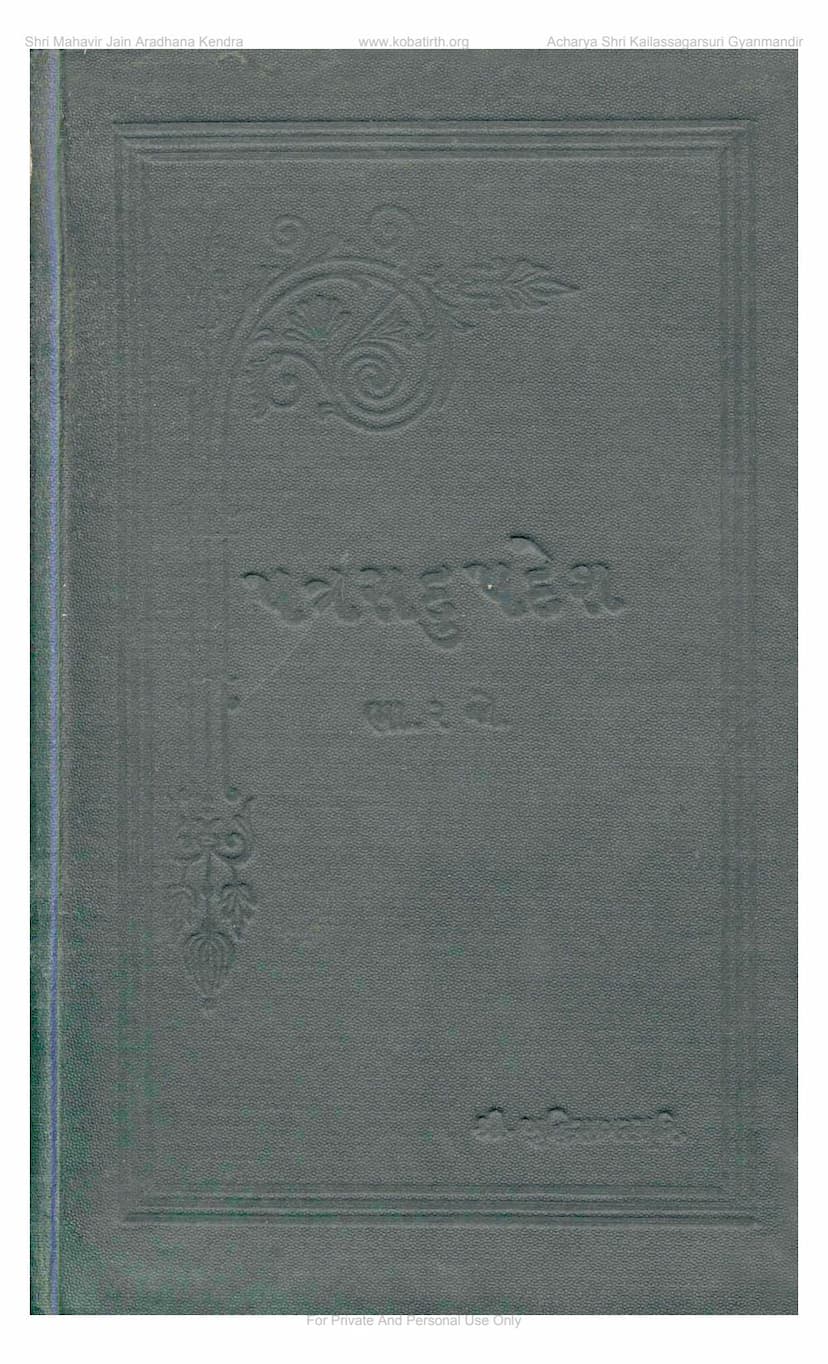Patrasadupadesh Part 2
Added to library: September 2, 2025

Summary
Based on the provided text, here's a comprehensive summary of the Jain text "Patrasadupadesh Part 2" by Buddhisagar:
Book Title: Patrasadupadesh Part 2 Author: Buddhisagar Publisher: Adhyatma Gyan Prasarak Mandal
Overall Summary:
"Patrasadupadesh Part 2" (Letters of Good Counsel, Part 2) is a collection of letters written by Acharya Yoganishtha Shrimad Buddhisagar Suri, a scholar and enlightened Jain monk. The letters are addressed to various individuals on different occasions and are designed to impart spiritual guidance and practical advice based on Jain philosophy. The core message revolves around self-realization, detachment from worldly affairs, righteous conduct, and the ultimate goal of spiritual liberation (moksha).
Key Themes and Content:
The book, through its series of letters, delves into a wide range of topics pertinent to spiritual seekers and householders alike, with a strong emphasis on the practical application of Jain principles in daily life. The letters aim to guide readers towards self-improvement, ethical living, and ultimately, spiritual upliftment.
-
Spiritual Guidance and Self-Realization:
- The letters repeatedly emphasize the importance of recognizing the soul (Atma) as the true self, distinct from the body and worldly attachments.
- Acharya Buddhisagar guides readers to turn their attention inward, cultivating self-awareness and understanding the nature of reality through practices like meditation and contemplation.
- The concept of "Atmananda" (soul's bliss) is presented as the ultimate goal, far superior to fleeting worldly pleasures.
-
Ethical Living and Conduct:
- Ahimsa (Non-violence): The principle of Ahimsa is presented not just as refraining from physical harm but also extending compassion to all living beings. This includes advice on diet and avoiding harm in daily activities.
- Righteousness and Dharma: The importance of adhering to Jain principles, ethical conduct, and spiritual discipline is consistently highlighted. This includes the practice of virtues like truthfulness, non-stealing, celibacy, and non-possession.
- Detachment (Vairagya): The letters encourage detachment from worldly possessions, relationships, and sensory pleasures, viewing them as impermanent and ultimately a source of suffering.
- Control of Senses and Mind: Considerable emphasis is placed on mastering the mind and senses, which are seen as the primary obstacles to spiritual progress. The text advocates for practices like meditation, self-control, and mindfulness.
-
Practical Advice for Householders:
- The letters offer guidance on managing worldly responsibilities while maintaining spiritual focus. This includes advice on ethical business practices, financial management, and maintaining good relationships.
- The importance of right perspective is stressed, understanding the impermanent nature of worldly relationships and possessions.
-
Guru-Disciple Relationship:
- The absolute necessity of a Guru (spiritual teacher) for spiritual guidance is a recurring theme. The letters stress the importance of unwavering faith, devotion, and obedience to the Guru's teachings. The Guru is depicted as the direct link to realizing the true self.
-
Critique of Worldly Pursuits:
- The text frequently contrasts the transient nature of worldly pleasures and achievements with the eternal bliss of the soul. It warns against being misled by sensory desires and external validations.
- The letters subtly critique the superficiality of some religious practices that lack inner transformation.
-
Emphasis on Effort and Perseverance:
- Acharya Buddhisagar encourages readers to put in consistent effort and strive diligently towards their spiritual goals, highlighting that self-effort is crucial for liberation.
-
Inclusivity and Tolerance:
- While rooted in Jainism, the letters promote a broader sense of spiritual understanding and tolerance, suggesting that different paths can lead to the same ultimate goal, provided they are followed with sincerity and righteousness.
-
Genealogical and Historical Information:
- The book also includes genealogical information, tracing the lineage of prominent individuals, such as Seth Jesinghbhai Ravichandbhai and Seth Kankuhand Becher. This historical context adds depth to the narrative and connects the spiritual teachings to the community's heritage. It provides insights into the historical spread of Jainism and its influence.
Structure and Tone:
The letters are written in a compassionate, encouraging, and didactic tone. Acharya Buddhisagar's profound spiritual insight and practical wisdom shine through each letter. The language is accessible, aiming to convey deep spiritual truths in a manner that is understandable and relatable to the common reader. The inclusion of historical and genealogical details adds a unique dimension, grounding the spiritual teachings in the socio-cultural context of the time.
Overall Message:
"Patrasadupadesh Part 2" serves as a spiritual manual, offering timeless wisdom for navigating life's challenges and striving for spiritual emancipation. It is a guide for living a life of virtue, purpose, and ultimately, self-discovery and liberation, emphasizing the Jain path of self-discipline, non-violence, and spiritual wisdom.